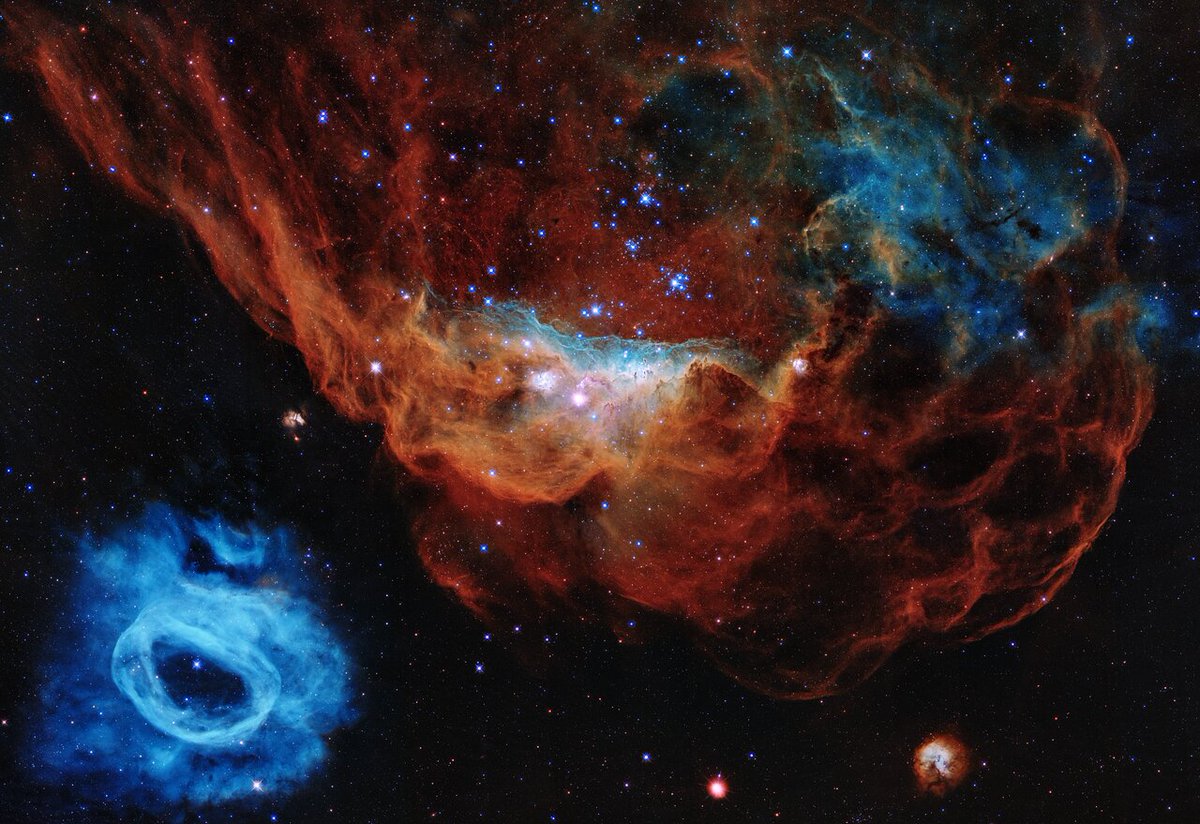
Official @ESA feed for #Hubble Space Telescope — the space-based observatory which has revolutionised modern astronomy. #BFFinSpace with @ESA_Webb
How to get URL link on X (Twitter) App


 2/ Like Earth, Saturn is tilted on its axis and therefore has four seasons, each of them lasting around seven Earth years. Equinox marks the height of spokes’ visibility, while during a solstice the spokes disappear.
2/ Like Earth, Saturn is tilted on its axis and therefore has four seasons, each of them lasting around seven Earth years. Equinox marks the height of spokes’ visibility, while during a solstice the spokes disappear.

 2/ This observation was possible due to gravitational lensing: light from distant stars is bent by the gravity of massive galaxies in the way. This light took 3 different paths through the cosmic lens of galaxy cluster Abell 370, showing the supernova in 3 stages of evolution.
2/ This observation was possible due to gravitational lensing: light from distant stars is bent by the gravity of massive galaxies in the way. This light took 3 different paths through the cosmic lens of galaxy cluster Abell 370, showing the supernova in 3 stages of evolution. 

 2/ Astronomers estimate that 100 million black holes roam among the stars in our Milky Way galaxy, but they had never conclusively identified an isolated black hole before.
2/ Astronomers estimate that 100 million black holes roam among the stars in our Milky Way galaxy, but they had never conclusively identified an isolated black hole before. 
 @GeminiObs 2/ A new atmosphere model reveals that excess haze on Uranus builds up in the planet’s stagnant, sluggish atmosphere and makes it appear a lighter tone than Neptune.
@GeminiObs 2/ A new atmosphere model reveals that excess haze on Uranus builds up in the planet’s stagnant, sluggish atmosphere and makes it appear a lighter tone than Neptune. 
 2/ This menagerie includes three spiral-shaped galaxies, an elliptical galaxy and a lenticular (lens-like) galaxy. Somehow, these different galaxies have crossed paths to create an exceptionally crowded and eclectic galaxy sampler.
2/ This menagerie includes three spiral-shaped galaxies, an elliptical galaxy and a lenticular (lens-like) galaxy. Somehow, these different galaxies have crossed paths to create an exceptionally crowded and eclectic galaxy sampler.

 📌 The newly detected star is so far away that its light has taken 12.9 billion years to reach Earth, appearing to us as it did when the Universe was only 7% of its current age.
📌 The newly detected star is so far away that its light has taken 12.9 billion years to reach Earth, appearing to us as it did when the Universe was only 7% of its current age.

 2/6 To commemorate three decades of scientific discoveries using @Hubble_Space , this image is one of the most photogenic examples of the many turbulent stellar nurseries the telescope has observed during its 30-year lifetime.
2/6 To commemorate three decades of scientific discoveries using @Hubble_Space , this image is one of the most photogenic examples of the many turbulent stellar nurseries the telescope has observed during its 30-year lifetime.